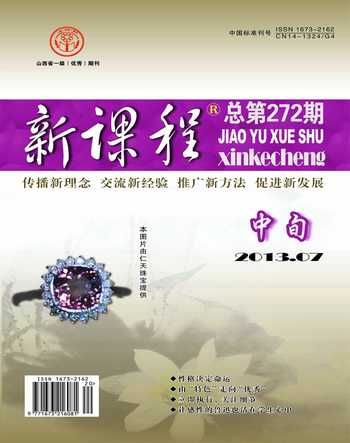听力临门一脚
梁晏菲
一、仔细阅读题干及问题,从中了解题目所提供的信息,确定听力的方向
例如:句子理解
A.She heard from her husband this morning.
B.She heard from her son this morning.
C.She heard from her son last night.
D.She heard from her son yesterday morning.
阅读题干,从中得到如下信息:
(1)她收到一封信(She heard from...)。
(2)这封信是她丈夫(her husband)或儿子(her son)写的。
(3)这封信有可能是今天早晨(this morning)、昨天晚上(last night)或昨天早晨(yesterday morning)收到的。
根据这三个信息,听录音时则侧重听两个方面:一是谁写的信。her husband 或 her son; 二是时间。This morning, last night 或yesterday morning.
确定了听力的方向,在听的过程中,学生就更易于听懂。听到听力材料:The old woman was very happy this morning because she received a letter from her son.
Question: When did the old woman hear from her son?
就很容易选出答案B了。
二、做听力题时,避免面面俱到,应该重点突出,才能做到弹无虚发
往往在做听力题时,学生总想把每个词,每句话都听得清清楚楚,明明白白。但是越想面面俱到,反而听了上句,漏了下句,得不偿失。所以在做题时,一定要找出重点,突出重点。
例如:
根据句子及问题选择正确答案。
A.For an hour.
B.For half an hour.
C.For over an hour.
D.For nearly an hour.
根据题干,我们就能看出问题肯定是对时间在提问,那么听力的重点一定要放在听时间上。
听力材料:The car stopped in the town at four. Mr. and Mrs. Black got out and ate something. And they left there at ten to five.
Question:How long did Mr. and Mrs. Black stay in the town?
因此在听的过程中,自然要留意at four 和at ten to five 这两个时间点,那么问题的答案便显而易见为D。
三、了解文章大意,不打无准备之仗
做听力题一定要先浏览全文,尤其是短文理解和短文填空之类的题,要做到文章的基本内容了然于心。这样才能知己知彼,百战不殆。
例如:听短文三遍,用短文中的信息填空。
Mrs. Green:a _____ _____ mother
gets up _____ and goes to bed _____
cooks _____ and _____ for her family
goes to _____ in a _____ factory
comes home at 5:30 in the _____
does all kinds of _____
浏览全文后,我们就知道听力材料与格林夫人的日常生活有关。格林夫人是位母亲,要为全家煮饭,还要去一家工厂上班,每天五点半回家等等。
了解了这些情况,听力材料就变得容易多了。答案也很快就听出来了:good,busy,early,late,breakfast,supper,work,shoe,afternoon,housework
总而言之,做听力题要把技巧和实力结合起来,才能取得事半功倍的效果。
(作者单位 重庆市长寿中学)

